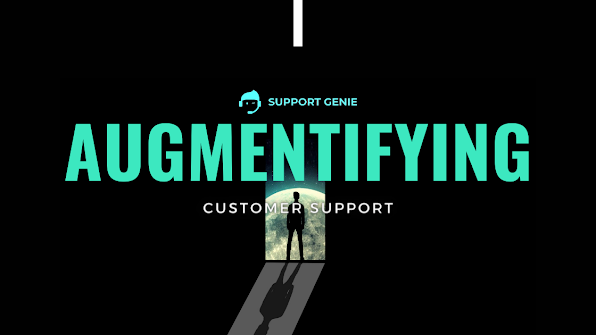The Top 3 AR Use Cases in Customer Support
The Top 3 AR Use Cases in Customer Support
In 2019, Gartner removed Augmented Reality (AR) from its hype cycle (an annual visualization of emerging technologies). The consulting giant believed that the technology had "matured" and that it no longer presented a hype cycle opportunity.
Even though the reason was plausible, the speculations for the exclusion were rife. After all, AR had been regularly featuring in the hype cycle since 2005. So, had it really matured? Or did it simply fall out of favor?
From an industry standpoint, neither of these arguments really fit. Despite the "sober" predictions around AR, the technology has continued to grow, innovating new use cases on a daily basis.
This is to imply that it has reached application "maturity" but still touts of unprecedented potential. And this is good, really good.
As for the customer support industry, AR has indeed set the tone for becoming ubiquitous. It's no longer an isolated product feature of the gaming industry or a research interest for the sciences. It has become the hotbed of innovation, holding ground for its ability to optimize customer support experiences.
To that end, here's a list of the top three AR use cases in customer support.
1. Visual Support
Imagine a support agent being able to juxtapose an overlay of a cable configuration along with the actual cable in question. It would be an invaluable way to offer visual support to users without having to go through confusing steps.
Couple that with a 3D rendering of both the product and its components, and a support agent instantly has a full-blown visual at their disposal. They can also use it to offer detailed explanations, making for a better user experience.
Already, businesses with visual assistance at their disposal have been able to decrease the customer effort by 2.7 times. The addition of AR into the mix only serves to make this benefit even more pronounced.
2. DIY Empowerment
More than 40% of the customers today are interested in having a visual guide to accompany them to resolve issues. This does not necessarily mean that they do notwant to speak to a support agent; it's just that they prefer to be able to understand the problem and perhaps have it self-addressed before actually asking for help.
With AR-powered self-service guides, companies can offer this service without having to invest in professional help. The end-user gets it directly through their smartphone or tablet, making for an easier transition. The benefits of AR's implementation for self-support are multifaceted. For instance:
a. It fends off the issue for a more prolonged period of time.
b. It lets a support agent work more on a project, as they can allocate their resources to some other real-life intervention instead of dealing with an ongoing support case that may or may not actually have a serious issue
c. It allows for the implementation of on-demand help, which consequently helps in improving the customer satisfaction index.
d. The use of AR-powered guides also enables the business to save on both time and money by alleviating the need for having to have an agent 24*7 on the other side.
3. Agent Training
Excellent agent experiences are the backbone of positive customer interactions, and AR can add another layer of convenience to it. "AR can boost employee engagement and safety awareness, alleviate training costs, and lower learning curves," says Lorne Fade, a Forbes Council Member.
The above is made possible by:
a. Equipping agents with simulated operational experiences for creative problem-solving and critical thinking
b. Helping agents make a smooth transition from training to actual experience
c. Providing agents with the right tools to train on the go without having to wait for a platform to be up and running
d. Allowing agents to alter and customize the experience
So, the next time your agents could use a helping hand, you can give them one through AR.
Wrapping Up
From simplifying support to mitigating costs, AR is here to stay. The technology is still in its infancy, and new use cases are being discovered on a daily basis. What makes it stand out is the fact that it's more of a tool than a standalone technology.
For customer support, that means having access to solutions that help solve problems without having to rely solely on the stand-in support team. AR will make for an easy transition from remote learning to hands-on training and from remote support to actual delivery of remote services, all while providing an engaging experience for new or existing users.


Comments
Post a Comment